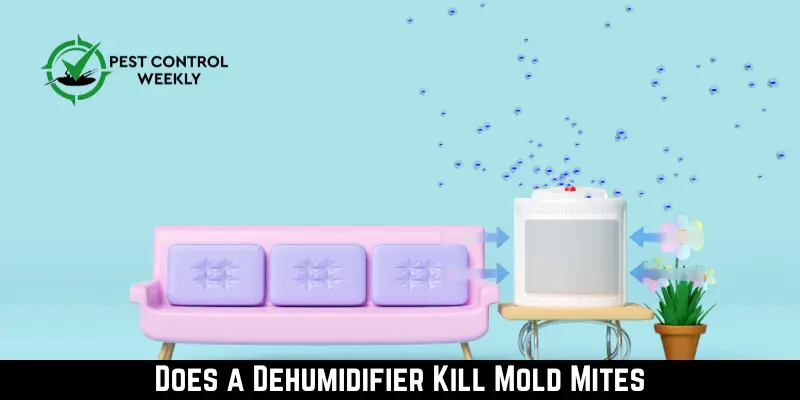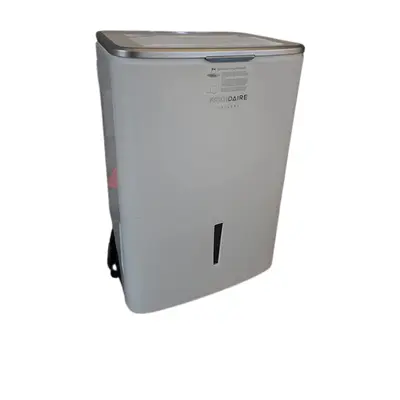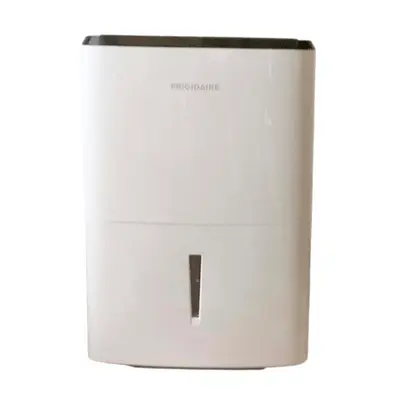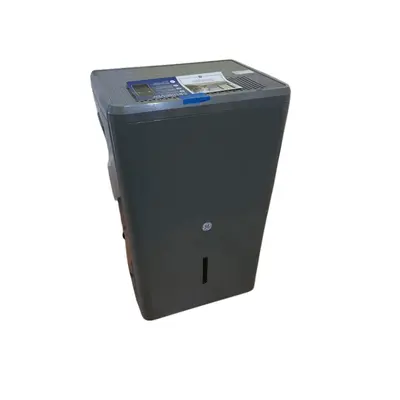Mold mites are tiny pests that are almost microscopic. Since these bugs eat mold spores, they need a constant source of humidity and water to live. In comparison, dehumidifiers remove humidity from the air. A common question in most people’s minds is “does a dehumidifier kill mold mites?”
No. Dehumidifiers don’t kill mold mites. However, dehumidifiers prevent mold problems in damp places like basements and laundry rooms. Mold mites can only be eradicated by thorough mold removal and remediation.
This article discusses mold mites, including dehumidifiers to prevent them and remedies for killing them.
What Are Mold Mites?
Mold mites are a common type of pest that only eat fungi. They like moist places to live, they are also called moisture mites. Mold-eating pests can move easily from one damp place to another, where they can quickly reproduce.
Mold mites are mostly found outside on rotting plants, rotting wood, and sometimes even bird nests. They don’t bite, but their body hairs help them detect when things fall off and become airborne, exacerbating allergies and breathing problems.
It is a fungus that grows when there is a lot of water or when organic waste starts to break down. It’s the ugly green, black, and brown muck you’ve seen dripping out of a brick vent opening or slapping against the old concrete barrier in the back next to the leaking pipe.
How To Identify Mold Mites?
Mold mites are so small that they are almost impossible to see. They lack wings and have plump bodies that are coated in setae that are long and hairy. These extra parts act as organs of sense, and they often fall off and float through the air.
As the number of mold mites in a room increases, you may notice dark stains or blotches on the walls, particularly in the cracks. They can also be found on the shelves of cabinets and on food packaging as brown or white dust.
In most cases, it is not possible to differentiate the microscopic animals from the food source that they use. On the other hand, the signs of fungal development in your residence are strong indicators that you also have a problem with mold mites.
Difference Between Mold And Mold Mites
Mold Mites
Mold mites may grow only in damp environments with high relative humidity. They feed on mold and only live where mold and fungi grow. They have been found on many different things and in many different places, but what they all have in common is a high humidity level.
Molds
On the other hand, mold is a fungus that grows and spreads on wet or dying organic matter. There are many kinds of mold, and they come in a wide range of colors. Mildew is another term that can be used to refer to molds. They live inside and outside, in all climates, and at all times of the year.
What Causes Molds To Grow?
Mold grows in humid environments like leaking roofs, windows, or pipes or flooding. Mold can grow indoors and outdoors. If your home’s doors, windows, vents, or HVAC system are open, mold can easily enter your home.
The mold spores floating in the air can also colonize things like shoes and stuffed animals, which can then spread the spores inside. Roofs, pipes, walls, plant containers, and other damp areas are ideal breeding grounds for mold spores.
Numerous construction materials provide adequate nutrition for mold growth. Wet cellulose-based materials are fertile breeding grounds for certain types of mold. There are different ways that wet and moldy places can hurt your health. Some people are especially vulnerable to the health effects of mold.
How Do You Avoid Mold Mites?
You can keep mold mites away by keeping the area clean, including cracks and crevices. This completely removes places for mold mites to hide and food sources they could get from other places.
Mold mites can also be stopped by taking away their food source. If the mites don’t have anything to eat, they won’t be able to stay alive and won’t be a problem anymore. To prevent mold growth, it is important to manage indoor humidity and utilize products made specifically for this purpose.
Do Mold Mites Cause Harm?
Mold mites aren’t generally dangerous to humans. They don’t bite, but they have tiny hairs all over their bodies, and when the hairs fall out, they can irritate the skin. Mold mites don’t cause damage to the structure of a building.
But if you have a mold allergy, your immune system overreacts when you breathe in mold spores. A mold allergy can make you cough, have itchy eyes, and feel bad in other ways. Some people with asthma have a mold allergy, and being around mold makes it hard to breathe and causes other problems with their airways.
What’s A Dehumidifier And How Does It Works?
A dehumidifier is an air conditioning machine that lowers and keeps the humidity level in the air steady. This is usually done for health or comfort reasons or to eliminate musty smells and stop mildew from growing by taking water out of the air.
To remove moisture from the air, most dehumidifiers use a refrigeration system to take air from the space and pass it over a coil that has been cooled to an extremely low temperature. Most people call these items refrigeration dehumidifiers. The water vapor condenses on the cold surface and drips down into the bucket below.
Does Dehumidifier Prevent Mold Mites?
Yes, a dehumidifier will prevent mold mites. A dehumidifier is made to remove excess water from the air, which lowers the amount of moisture in the air. By doing this, dehumidifiers stop mold and mildew from growing and make your space’s air better.
Dehumidifiers reduce mold mite problems in damp places like basements and laundry rooms. However, dehumidifiers can’t kill mold mites. Mold spreads its spores into the air to make more mold. When these mold spores land on surfaces, they can grow if there is water, food, and room.
What Temperature Kills Mold Mites?
Most mold mites can be killed by extreme heat above 60 ° C. High temperatures can successfully eliminate mold spores from food and building materials. However, extremely cold temperatures can deactivate mold mites but don’t kill them.
Mold mites don’t die even when the temperature drops below freezing. They become dormant and will begin to multiply and grow again as soon as the temperature rises. Consequently, changing the temperature alone will not cure the problem of mold mites.
Do Refrigerant Dehumidifiers Aid In The Growth Of Mold And Mites?
No, refrigerant dehumidifiers didn’t aid mold and mite growth. Dehumidifiers are meant to lower the relative humidity in a room. This will limit mold growth but not eliminate it.
A dehumidifier that uses refrigerant works like condensation on a window. It has a cooling system that makes a space colder than room temperature. As the unit takes in air, it pulls moisture out and collects it in a separate area. Refrigerator dehumidifiers are good for buildings that need to keep plaster and concrete dry.
Best Dehumidifiers To Prevent Mold Mites
Your home’s moisture problem and the relative humidity outside will determine which dehumidifier is best for you. Most of the time, it’s a good idea to put one in the basement, bathroom, or kitchen, where there is more humidity. There are dehumidifiers for small rooms, and there are also ones that work for the whole house. The following are the three best humidifiers:
Frigidaire Gallery
There aren’t many of them, but monitoring and adjusting your dehumidifier remotely is a huge benefit. The tanks on most dehumidifiers have to be emptied by hand. As a result, they’re usually installed in a basement or somewhere out of the way.
Saving time by not having to walk back and forth to check on the tank’s status and the machine’s functionality is a major benefit of remote monitoring. Consequently, the Frigidaire FGAC5044W1 Dehumidifier is the most highly recommended dehumidifier.
Frigidaire Dumb Dehumidifier
When installed properly, the Frigidaire FFAD5033W1 Dehumidifier reduces humidity in damp basements to below 50%. This helps prevent wood rot, mildew, and another allergen- and property-damaging invaders.
Upstairs, it can maintain a level of humidity that is agreeable to most people in rooms up to 1,200 square feet in size. It is Energy Star certified and has extra features like a handle that can be pulled back and a place to store the cord. And its adaptability is a big plus for us.
Portable Dehumidifier Made By GE Energy Star
The GE Energy Star Portable Dehumidifier is nearly identical to the Frigidaire FFAD5033W1 Dehumidifier in all aspects, including its ability to remove the same quantity of water each day, its Energy Star rating, and its ability to pump the water to a sink or out a window.
The GE Energy Star Portable Dehumidifier has minor drawbacks compared to the Frigidaire, such as tiny, pocket-style handles that need to be more comfortable to grasp and where to wrap up the cord while putting the appliance away. Like Frigidaire appliances, several customers had complained that this one stopped working well before its two-year warranty expired.
What Immediately Kills Mold Mites?
Lysol can immediately kill mold mites. Lysol has a 99% efficacy rate against mold mites. But killing mold mites won’t get rid of mold on its own. Remember that mold mites are mostly caused by the humidity that makes mold grow. Because of this, you must do more than spray Lysol to get rid of them.
Lysol is 50% cresol made with vegetable oil. Thymol is made from the volatile oils of Thymus vulgaris, Monarda punctata. It is an alkyl derivative of phenol. It comes from colorless crystals that smell and taste very bad.
Other Ways To Get Rid Of Mold Mites
Here are some ways to get rid of mold mites in your house. These are natural ways to eliminate them to limit the damage from poisons left over from store-bought pesticides.
Take Away The Food Source
As a first step, remove the human food source. Mold mites usually go away independently when they have nothing to eat. If there is a small amount of mold on a surface, it can be cleaned without risk.
This should eliminate the majority of mites, although some may remain. Clean the area surrounding the food source and discard any leftovers. Mites may inhabit fractures and other tiny areas. Additionally, the humidity in the area might be reduced. If you decrease the relative humidity, they will be less likely to approach you.
Vinegar Spray
Most types of mold can be killed with this common cleaner. To get rid of a small patch of mold, mix equal parts white vinegar and water in a spray bottle. If you want a stronger cleaner, add more vinegar or a few sprays of dish soap.
First, try the mold remover in an area that won’t be seen. If it doesn’t harm the material, spray the entire moldy area. Scrub the mold and the area around it with a sponge, and then use a clean cloth to dry the whole surface.
Reduce Extra Water
It would help if you cleaned up any spills or areas with excess water. This includes drying the area around the sink, the dishes, and any other puddles of water that may be present. No matter how much water there is, every drop helps make up the total moisture.
Because mold mites can only grow in places that are damp or have high humidity. They have been found on many different things and in many different places, but what they all have in common is a high humidity level.
Lemon
The acid in lemon juice kills mold, and as it evaporates, it leaves behind a pleasant smell. After squeezing the juice from three to five lemons into a glass, pour the liquid straight into the mold.
The surface should be wiped with a moist towel after the juice has been allowed to sit there for five minutes. If the mold is especially hard to get rid of, use lemon juice again or scrub more.
Baking Soda
As well as attracting mites, toxic black mold can make you sick and give you rashes. This nasty mold can be killed by baking soda and soak up the moisture that helps mold grow.
Use this simple recipe to get rid of black mold. Add a teaspoon of baking soda to the water in a spray bottle. Shake the ingredients together, and then spray the moldy spot.
Use a scrub brush to get rid of the mold. Rinse the surface with water, spray it with the cleaner, and let it dry. If you have a tough patch of black mold, mix more baking soda with water to make a paste.
HEPA Filter
Mold spores can get into the air, and you can use an air filter to help get rid of them. Use a real HEPA filter to clean your air and eliminate even the smallest spores. There are a lot of air purifiers on the market, but you need to ensure you get one that’s HEPA and not one that looks like HEPA but has yet to be certified.
Depending on the room’s size and the air quality, you can choose from small to large air purifiers made for different rooms in the house. Mold mites flying around on clumps of airborne mold can prevent with a good filter.
Bleach
You can use bleach if you want to get rid of mold in your mattress or a mold mite infestation on a solid, nonporous surface like stainless steel. Don’t use bleach on a porous surface, since bleach can penetrate porous materials like wood and drywall, it will worsen the moisture issue.
A solution of one cup of bleach and one gallon of water can kill mold mites on solid surfaces.It is best to apply this on nonporous, solid materials like stainless steel in order to achieve the desired results.
Dehumidify
Dehumidifiers don’t kill mold mites, but they can help eliminate them. The running water from the sink and shower makes the air moist and increases the humidity.
Since mold mites like damp places, they tend to gather there and take over those parts of the house. If you can’t keep the room dry, use a dehumidifier. If you don’t have time to clean up after washing your hands every time, you might want to put a small dehumidifier in the room.
Borax
To get rid of mold that has grown on drywall, use borax. This only works on painted drywall. Mix water and pure borax. Shake the gallon of water to dissolve the cup of borax fully. Then put some in a spray bottle on the mold you can see. After a few minutes, this will kill the mold.
Use a dry cloth to wipe it off. If you have paint that might be broken, try it out first somewhere no one will see and see if it is broken. Only use borax on painted drywall.
Summing Up
It is nearly impossible to eradicate all mold mites from your home. Mold can stay in the air or on surfaces even when there isn’t enough water to grow. Mold will start to grow in a room where the humidity goes up. A dehumidifier can’t kill mold, but it can be stopped by lowering the humidity.
Controlling how much water is in your home is also good for your health. Dehumidifiers help eliminate these indoor pollutants that can cause allergy symptoms like a stuffy nose, itchy eyes, sneezing, or skin rashes. High humidity can also cause musty smells, which dehumidifiers can eliminate.



